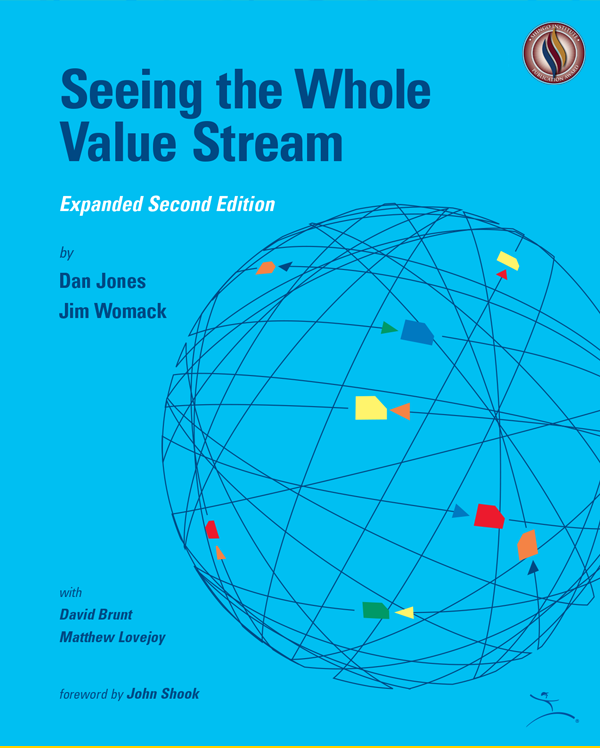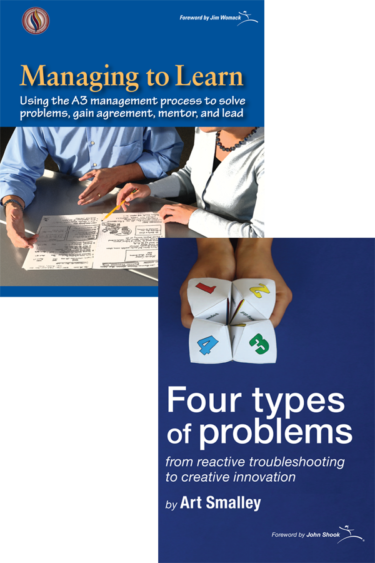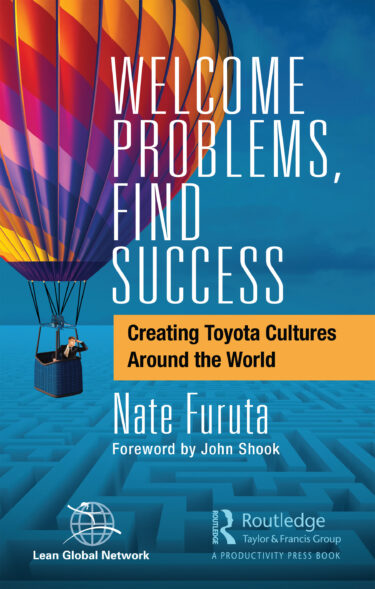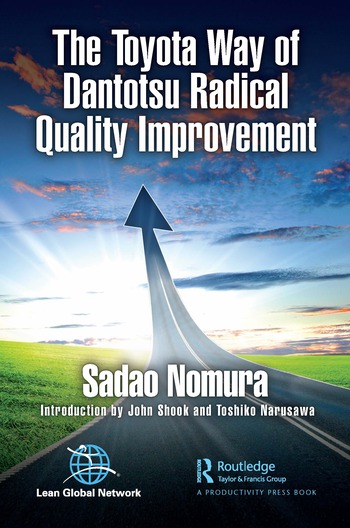An expanded 2nd edition of the workbook Seeing the Whole
Shingo Research and Professional Publication Award recipient
When the first edition of Seeing the Whole was published in 2003, the world was in a mad rush to outsource and offshore in pursuit of suppliers with drastically lower piece prices. Today the situation is very different; currencies have shifted, labor costs in many low-wage countries have risen, and the potential for squeezing further price reductions from suppliers is largely exhausted. What’s more, high product quality and rapid response to changing customer demands have proved elusive along unwieldy, opaque supply chains. Seeing the Whole Value Stream provides managers with a proven method for understanding and improving the value-creating process that suppliers share with customers.
By identifying all the steps and time required to move a typical product from raw materials to finished goods, the authors show that nearly 90 percent of the actions and 99.9 percent of the time required for the supply chain’s current state create no value. In addition, the method clearly shows demand amplification of orders as they travel up the supply chain, steadily growing quality problems, and steadily deteriorating shipping performance at every point up stream from the customer.
Applying the method to a realistic example, the authors show how four firms sharing a value stream can create a win-win-win-win future in which everyone, including the end consumer, can be better off.
The workbook goes step-by-step through an improvement process that converts the traditional supply chain of isolated, compartmentalized operations into an ideal future-state value stream in which value flows from raw materials to customer in just 6 percent of the time previously needed. The dramatically improved value stream also eliminates unnecessary transport links, inventories, and handoffs, the key drivers of hidden connectivity costs.
The information in the 108-page book is supported by multiple diagrams, charts, and maps. The main sections of the book are:
- Getting Started
- The Current-State Map
- The Extended Value Stream
- Future States 1 & 2
- Ideal State
- Perspectives on Extended Value Streams: 5 essays
In response to feedback asking for examples in other sectors and questions about how to understand supply chain costs more accurately, five essays have been added to the book for this new edition. These essays demonstrate how real companies have taken on the challenge of improving their extended value streams working in collaboration with their suppliers and customers.
The new essays for the book are:
- Spreading value-stream thinking from manufacturers to final customers through service providers—extending the wiper example. This extends the value-stream analysis in the first edition—using the same example of a windshield wiper—through the auto service system to the end customer.
- Applying extended value-stream thinking to retail—a look at the Tesco story. This follows the path of an individual product through a complex retail channel from manufacturer to end customer.
- Learning to use value-stream thinking collaboratively with suppliers and customers. This essay demonstrates how a second-tier supplier convinced much larger partners to embrace collaborative thinking about their shared value stream.
- Product costing in value-stream analysis. An essay on adding realistic costing to value streams to more accurately understand total cost.
- Seeing and configuring the global value stream. This essays shows how a manufacturer can analyze all of the value streams in a complex supply network.
Chapter Downloads:







Reviews
There are no reviews yet.